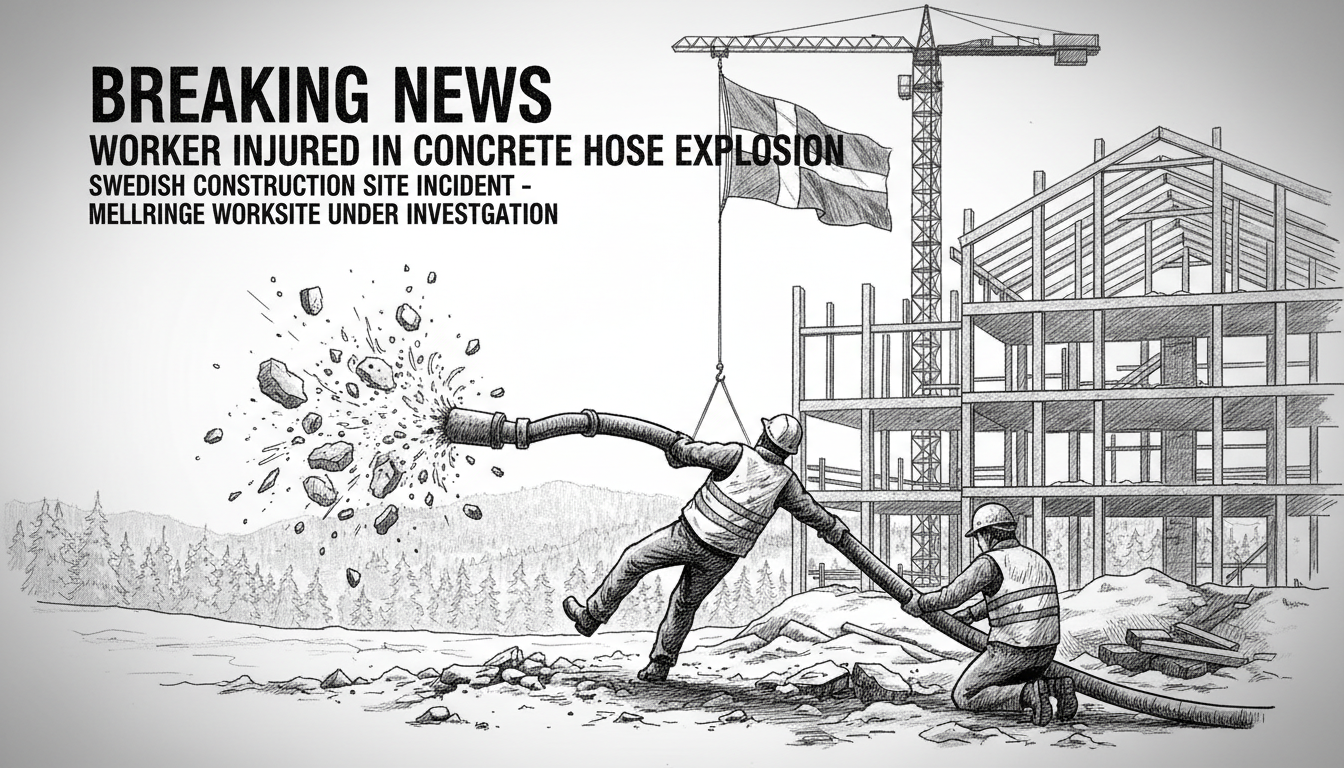A construction worker suffered injuries after a concrete hose exploded at a worksite in Mellringe, Örebro. The incident occurred on Thursday afternoon when an air bubble caused the pressurized hose to burst during concrete pouring operations.
The worker was knocked down by the force of the explosion. Emergency services transported him to a local hospital by ambulance. Medical staff confirmed the man remained conscious and communicative but reported significant pain from his injuries.
Police investigators documented the scene and initiated an official report. Authorities are examining potential workplace safety violations that may have contributed to the accident. This formal investigation will determine if any occupational safety laws were broken.
Construction site accidents involving pressurized equipment present serious risks across the Nordic building industry. Sweden maintains strict workplace safety regulations through the Swedish Work Environment Authority. These rules govern equipment maintenance, worker training, and hazard prevention protocols.
Similar incidents have occurred previously at Nordic construction sites. In 2022, a concrete pump accident in Stockholm injured two workers. Another case in Norway last year involved a ruptured hydraulic line that caused injuries.
International workers and expats in Sweden should understand that the country enforces rigorous safety standards. Construction companies face substantial penalties for safety violations. The Swedish Work Environment Authority can impose fines and even halt projects for serious infractions.
This accident raises questions about equipment inspection routines and air bubble management in concrete operations. Proper bleeding procedures for air pockets represent standard safety practice in construction. The investigation will likely examine whether these protocols were followed.
Workplace safety remains a priority in Sweden's construction sector. The country typically reports lower accident rates than many European counterparts. Still, incidents like this demonstrate that risks persist even in regulated environments.
Construction firms operating in Sweden must maintain detailed safety documentation. They face regular inspections from Work Environment Authority officials. Companies also carry mandatory insurance covering workplace injuries.
The injured worker will receive compensation through Sweden's national insurance system. His medical costs and lost wages will be covered during recovery. Swedish law provides strong protections for workers harmed on the job.
This case highlights the physical dangers construction workers face daily. Even routine tasks like concrete pouring can turn dangerous when equipment fails. The investigation's findings may lead to improved safety guidelines for similar operations across Sweden.
Local construction companies will likely review their own safety procedures following this incident. Industry associations often circulate accident reports to prevent similar occurrences. This knowledge sharing represents a key strength of Sweden's safety-focused construction culture.

